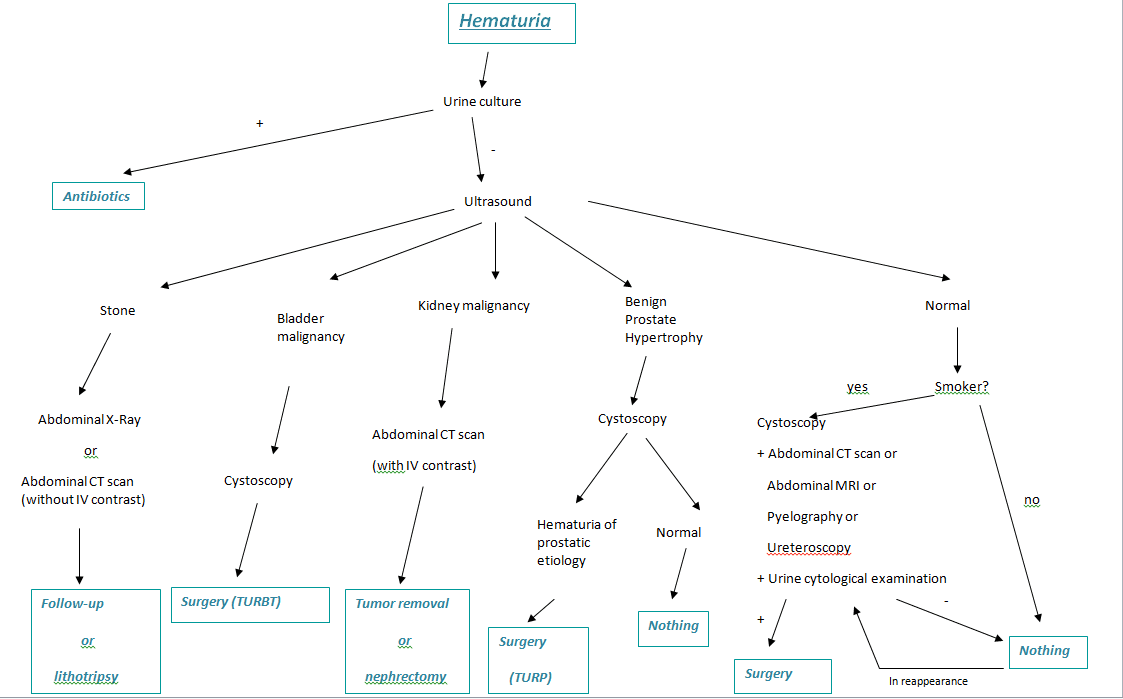Menu
Hematuria is the presence of red blood cells in the urine (>3-4 per field of view) under the microscope. It must be clarified that the red color in the urine does not necessarily come from the presence of blood. Urine may often have a different color than normal, after medication that the patient follows, after taking foods rich in various pigments (e.g. blueberries, beets, etc.) or in patients with jaundice. Sometimes also, the patient confuses hematuria with urethral bleeding (automatic exit of blood from the urethra without urination) or women with the exit of blood from the vagina which, subsequently, mixes with the exit of urine.
The diagnostic approach of hematuria will depend on parameters such as age, gender, history, habits and accompanying symptoms, as the male over 50 years or the female over 60 years old, smoker with painless macroscopic hematuria, is more likely to be malignancy. In addition to smoking, occupational exposure to colors or dyes (hairdressers, tanners) can also affect. It is worth noting that even a single episode of hematuria, without any recurrence, can hide some serious pathology. For this reason a complete diagnostic check is required.
The tests for the diagnosis of hematuria must necessarily include:
During the diagnostic evaluation of hematuria, it is of particular importance to determine its characteristics, i.e. if it is:
–gross or microscopic depending on whether the blood is visible to the naked eye or requires laboratory testing.
–Blood at the beginning, at the end of urination or total hematuria When it is at the beginning of urination, the urine clears afterwards and usually comes from some condition of the posterior urethra. When it is at the end of urination, it is possibly due to bleeding in the bladder neck area. Total hematuria is blood in the entire urination and is associated with diseases of the bladder or upper urinary tract.
–painful or painless. This is important information in the diagnosis, as painless hematuria is usually accompanied by malignancy, while painful with lithiasis, inflammation of the urinary tract.
The treatment of hematuria is aimed at treating the etiology that causes it. But there are some immediate measures that can be taken. It is therefore recommended to drink plenty of fluids to prevent the formation of blood clots, as in this case it may be necessary to insert a urinary catheter and wash to remove them. After the examination is completed and the cause of the hematuria is established, the treatment is done according to that.


You can also book your next appointment online. Just fill out the form and we will contact you.